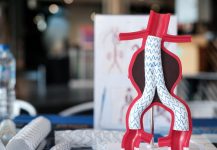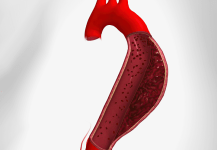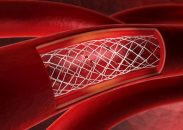Peripheral vascular disease is on the rise and peripheral PCI is at present the first choice of treatment for most patients. The use of IVUS in femoropopliteal territory has shown great benefits, especially in left main and complex PCI, reducing mortality and restenosis but, though promising, in lower limb ischemia we have little information as…
CLOUT Registry: Thrombectomy in TVP with ClotTriever
Safety and efficacy of the ClotTriever device in extended deep vein thrombosis. The endovascular treatment of thromboembolic disease has evolved and new devices have come out in the last few years to reduce morbimortality from its complications. Sub-treating this pathology has long term implications, such as reduced quality of life, limiting functional class and, worst…
Retrograde Tibial Access for Endovascular Treatment of Femoropopliteal Occlusions: Is it a Safe Strategy?
Endovascular recanalization of femoropopliteal occlusions continues to be one of the initial therapeutic strategies to treat this pathology. The anterograde approach via the common femoral is the most frequently used. However, it is not always viable, especially in long occlusions with severe calcification or when the femoral artery cannot be reached. In these cases, the…
Deep Vein Arterialization: Have We Conquered “Non-Revascularizable” Critical Limb Ischemia?
Deep vein Arterialization in patients with critical “non-revascularizable” limb ischemia. We are familiar with the poor quality of life and elevated mortality of patients with chronic limb-threatening ischemia (CLTI). In its last stages (nearly terminal), revascularization (either surgical or endovascular) has been shown to reduce amputation incidence. However, similarly to heart disease and other vascular scenarios,…
SAFE-AAA: Are the New Endologix Devices for Abdominal Aortic Aneurysm Safe? 3-Year Followup
New unibody endologix endografts for the endovascular repair of abdominal aortic aneurysm 3-4-year safety followup At present, we have seen endovascular intervention of abdominal aortic aneurysm (EVAR) increase over surgical repair. However, the procedure is not free from complications, endoleak being the most frequent. Indeed, according to different series, it has a 20-25% incidence in AAA. Most…
TAVR: Vascular Access in Patients with Peripheral Artery Disease, 1-Year Outcomes
At present, the transfemoral access (TFA) is the preferred approach when it comes to transcatheter aortic valve replacement (TAVR). However, 5 to10% of PAD patients present tortuous iliac anatomy and calcification, aortic aneurysms or prior peripheral intervention, which makes it impossible. There are several alternatives to approach these patients: 1) TFA associated to peripheral PCI…
Relationship Between Medical Treatment and Long-Term Clinical Results after Peripheral Vascular Intervention
Peripheral arterial disease (PAD) is one of the consequences of atherosclerosis, and it can cause pain in the limbs or tissue loss. Its treatment includes lifestyle changes such as exercise, statin therapy, antiplatelet therapy, antihypertensive medication (mainly ACE inhibitors or ARBs), and revascularization strategy. One in five patients with PAD will have experienced acute myocardial…
Arterial Patency in Femoropopliteal Disease with Drug-Eluting Balloons
Follow-up of drug-coated balloon angioplasty in femoropopliteal disease in a real-world population. Using drug-releasing devices has decreased the rate of restenosis in obstructive femoropopliteal lesions compared with conventional balloons or conventional stents (bare-nitinol stent, BNS). Both in the placement of BNS and of drug-eluting stents (DES) there is a mechanical risk of stent fracture or…
Uncomplicated Type B Aortic Dissection
Mortality Assessment, Interventions and Hospitalization in Patients with Uncomplicated Type B Aortic Dissection with TEVAR. Over 60% of type b aortic dissections present with no complications, such as signs of imminent rupture or already established poor perfusion. Most uncomplicated type b aortic dissections (uTBAD) are managed with medical treatment to control pain and limit the…
Stent Revascularization in Femoropopliteal Disease: An Analysis of Clustered Randomized Trials
A study compared pooled data of claudication and critical ischemia patients treated with stenting vs. by-pass surgery in femoropopliteal disease. The main objective of revascularization in femoropopliteal disease is to improve the quality of life and functional capacity of claudication patients who did not respond to medical treatment, and to save the affected limb in…
What Is the Best Strategy for Moderately Complex Femoropopliteal Lesions?
At present, PCI is the preferred treatment for femoropopliteal lesions and drug coated balloons (DCB) have shown good performance. However, they have not yet been shown superior to bare-metal stents (BMS). This study compared randomized trials IN.PACT SFA I/II and IN.PACT JAPAN including 288 patients vs. the prospective Complete SE and DURABILITY II with 483…










